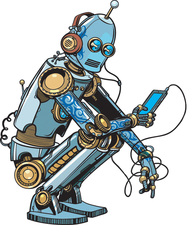Cross-platform game and app development for new programmers
Easy Does It

© Lead Image © Valeriy Kachaev, 123RF.com
Ren'Py helps you create Android, Linux, macOS, Windows, and HTML5 games and apps.
Although you can find some excellent cross-platform development tools, many of these tools come with a steep learning curve for new programmers. Ren'Py [1] is a visual novel engine that has been around for more than 10 years, and it is one of the easiest packages to learn for game and app development.
The nice thing about Ren'Py is that you don't need any previous programming experience. Ren'Py uses a simple "screen language" that allows you to add backgrounds, images, character dialogs, and menus. For more complex requirements, Ren'Py supports inline Python and Python blocks.
The Ren'Py software development kit (SDK) is supported on Linux, macOS, and Windows, with final applications that can be built to run on Android, iOS, Linux, macOS, and Windows and in browsers with HTML5 (Figure 1).
[...]
Buy this article as PDF
(incl. VAT)
Buy Linux Magazine
Subscribe to our Linux Newsletters
Find Linux and Open Source Jobs
Subscribe to our ADMIN Newsletters
Support Our Work
Linux Magazine content is made possible with support from readers like you. Please consider contributing when you’ve found an article to be beneficial.

News
-
Two New Distros Adopt Enlightenment
MX Moksha and AV Linux 25 join ranks with Bodhi Linux and embrace the Enlightenment desktop.
-
Solus Linux 4.8 Removes Python 2
Solus Linux 4.8 has been released with the latest Linux kernel, updated desktops, and a key removal.
-
Zorin OS 18 Hits over a Million Downloads
If you doubt Linux isn't gaining popularity, you only have to look at Zorin OS's download numbers.
-
TUXEDO Computers Scraps Snapdragon X1E-Based Laptop
Due to issues with a Snapdragon CPU, TUXEDO Computers has cancelled its plans to release a laptop based on this elite hardware.
-
Debian Unleashes Debian Libre Live
Debian Libre Live keeps your machine free of proprietary software.
-
Valve Announces Pending Release of Steam Machine
Shout it to the heavens: Steam Machine, powered by Linux, is set to arrive in 2026.
-
Happy Birthday, ADMIN Magazine!
ADMIN is celebrating its 15th anniversary with issue #90.
-
Another Linux Malware Discovered
Russian hackers use Hyper-V to hide malware within Linux virtual machines.
-
TUXEDO Computers Announces a New InfinityBook
TUXEDO Computers is at it again with a new InfinityBook that will meet your professional and gaming needs.
-
SUSE Dives into the Agentic AI Pool
SUSE becomes the first open source company to adopt agentic AI with SUSE Enterprise Linux 16.

